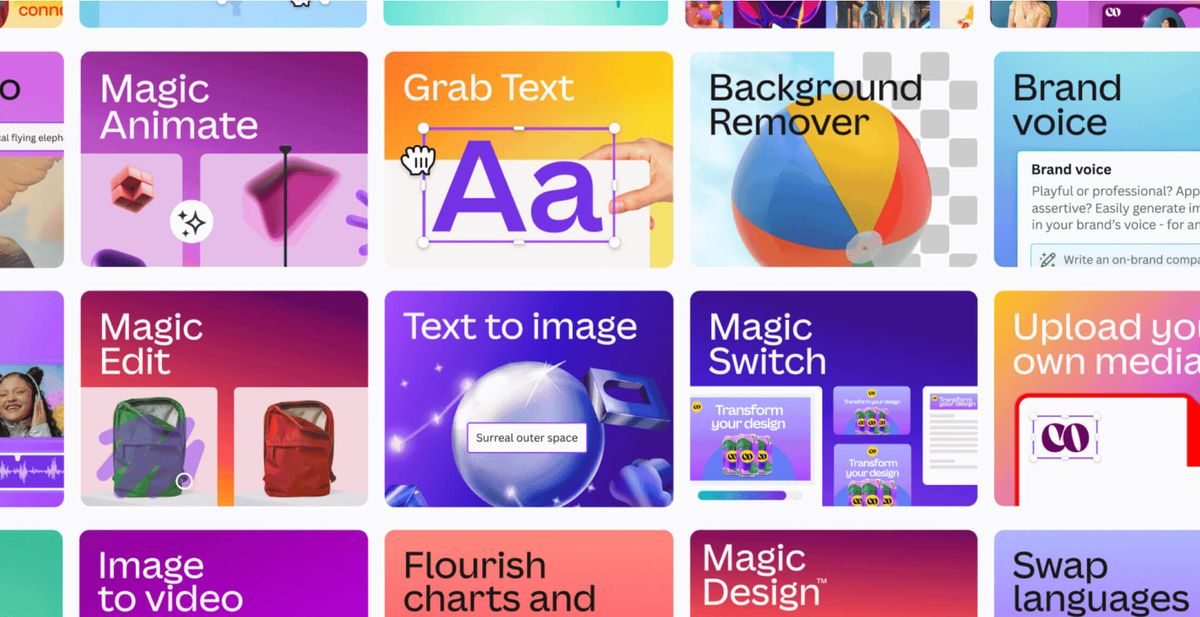
Canva has announced Magic Studio, a robust new product suite empowered by artificial intelligence. This major release represents Canva's biggest product launch in its 10-year history and aims to dramatically enhance the design process for professionals and amateurs alike.
Magic Studio packs a wide range of AI-powered features into Canva's existing platform, equipping users with sophisticated capabilities to boost creativity, streamline workflows, and scale content production. While Canva has already reached over 150 million users globally, Magic Studio appears poised to propel its adoption even further.
Headlining the new product suite is Magic Design, which Canva pitches as "a whole new way to create engaging content." True to its name, Magic Design leverages AI to rapidly generate designs based on the user's prompt and uploaded media. The tool identifies the user's needs and churns out tailored designs within seconds. Users can then customize the AI-generated drafts by adding their own flair.
Magic Design also enables video creation with the new Magic Design for Video feature. For this functionality, Canva is partnering with Runway to bring its powerful Gen-2 AI video generation capabilities to its platform. Users simply upload their media assets, dictate what kind of video they want, and Magic Design pieces together a polished, shareable video complete with music pairing and timed visuals. For presenters, Magic Design for Presentations develops professional slide decks in the user's brand style based on their high-level prompt and content ideas.
Magic Switch represents another breakout capability that allows users to instantly reformat designs into different layouts, styles, and languages. With a click, Magic Switch can transform presentation slides into a blog post, social media graphics into posters, and more. This promises to eliminate many tedious manual reformatting tasks.
On the multimedia front, Magic Studio introduces a suite of intuitive AI-powered image editing tools. Magic Grab makes images fully editable like Canva templates, while Magic Expand regenerates the area outside of a photo's frame. Magic Morph applies text and shape effects based on natural language prompts, facilitating quick stylistic flourishes. Magic Edit enables users to make sophisticated photographic edits by describing desired changes in plain words.
For media creation, Magic Media can now generate custom photos, 3D images, illustrations, and short videos from text prompts. Magic Animate automates animation and transition effects, removing this traditionally complex and time-intensive chore. Meanwhile, an enhanced version of Canva's existing Magic Write provides AI-powered copywriting assistance tuned to the user's brand voice.
Behind the scenes, Canva Shield offers robust controls and safeguards to keep AI-powered features ethical, private, and secure. Canva states that it does not use customer content to train its AI models by default. However, an opt-in model provides opportunities for users to allow their content to improve Canva's algorithms in exchange for compensation.
With its comprehensive range of AI-enhanced tools, Magic Studio aims to open up sophisticated design capabilities to Canva's full community. By combining AI and usability, it intends to reshape how individuals, teams, and organizations create visual content and scale their design efforts. Canva appears poised to extend its reach even further as businesses increasingly embrace design-driven strategies in an evolving digital landscape.

